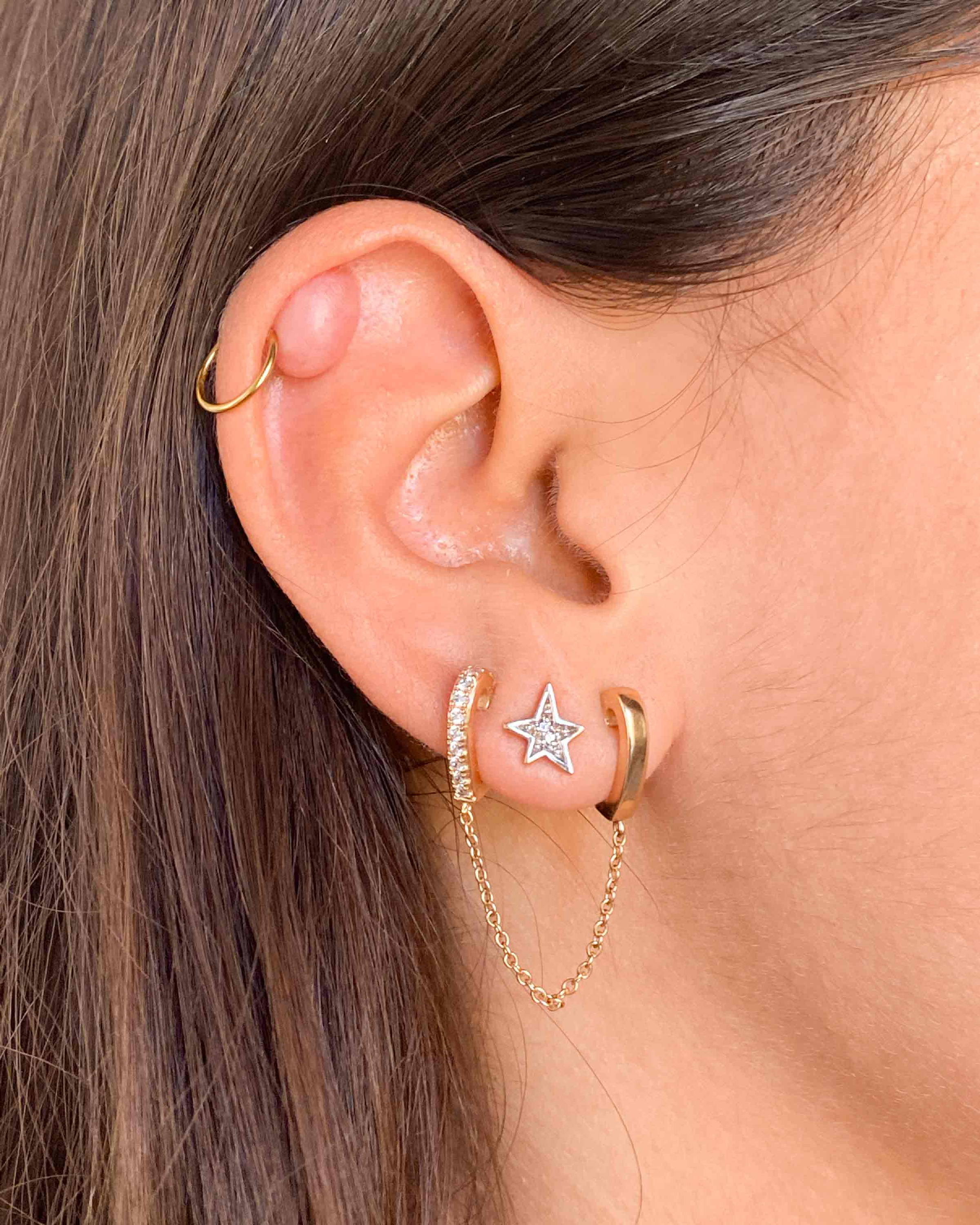Happy to show off your new helix piercing, you realize that a ball is forming at cartilage level...
First of all: don't panic! It's definitely a keloid. As soon as you feel a little lump, you need to act quickly, because it can quickly grow and develop...
🕐 Playback time: 4 mins
Contents :
What exactly is a keloid?
During the healing process of a lesion - in this case, the lesion caused by a piercing - the skin may not develop normally. It' s this abnormal healing that leads to the formation of keloids.
A zone of irregular fibrous tissue (made up of collagen) forms at the site of the piercing, giving rise to a ball of varying size. This ball is in fact a growth of skin .

If you've fallen for one of our earrings, find it here. here.
We agree, it's not very glamorous! But keloids don't pose any health risk, and fortunately they can be removed!
Not being a doctor, my best advice would be to go andsee a dermatologist or your GP.
However, I'm going to give you a few tips that you can apply to get rid of your keloid, without going to the doctor.
how to prevent keloids?

Better safe than sorry...
First and foremost, it's best to prevent keloids from appearing in the first place! To do this, there are several things you can do:
- Most important of all: we can't stress this enough, don't get pierced with a spray gun! You're more likely to develop a keloid that way. Go to a piercer who uses a needle!
- The jewelry must be adapted to your piercing. It's important that it doesn't move too much, to avoid friction that could slow down the healing process.
- Don't give in to the temptation to change your prosthesis! Keep it until your piercing has healed.
- Prevents bumps and snags on the pierced area: beware of hair...
- Don't touch or play with your new piercing.
- Above all, don't sleep on the side where you had your piercing done. It's better not to pierce both ears at the same time if you don't like sleeping on your back!
- Change your pillowcase every 3-7 days.
- If your piercing is close to the area where you wear your headphones, you'll have to do without them for a few weeks...
TREAT your Cheloid with natural methods
On the Internet, you'll probably find plenty of advice on how to get rid of your keloid naturally, such as usingtea tree oil, taking salt water baths or applying honey. But I have to tell you, I'm not a big believer.
In the team, several of us had keloids and the tea tree didn't do much... So maybe we lacked patience, because it's quite a long process, but we really didn't see any difference after two months of daily application. The same goes for honey or salt water... Not very conclusive, then!
caring for your cheLoid with drugstore products
An inexpensive product, easily found in pharmacies and which worked like a charm for two of us, is Daquin !
You'll need to apply it around your keloid twice a day for at least 2 months, until the keloid disappears. Patience and discipline will be required, but it really can work.
If after 3-4 months you don't see any change in your keloid, it's best to tackle the problem head-on and see a dermatologist.
THE LAST SOLUTION:
TREATING KELOIDS WITH MEDICAL TREATMENTS

There are several other medical treatments for keloids, but you'll need to consult a healthcare professional (doctor or dermatologist) to find out which method is best for you.
Here are the different medical treatments:
- a cortisone injection: the doctor injects cortisone into the keloid
- cryotherapy: this operation involves freezing the keloid and injecting it with liquid nitrogen
- laser treatments are also possible but very expensive
- surgery: you can also consider removing your keloid, but you'll have to go under the knife 😣
To avoid CHELOID, use Ear cuffs!
They give the illusion of real piercings (conch or helix), but without ANY PAIN or complication!



